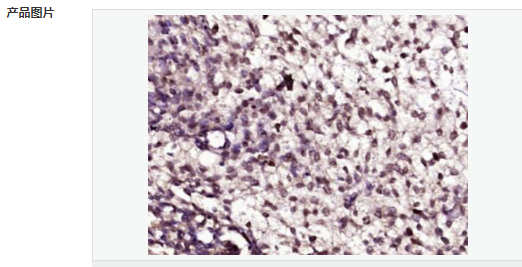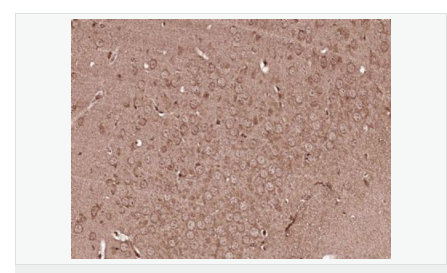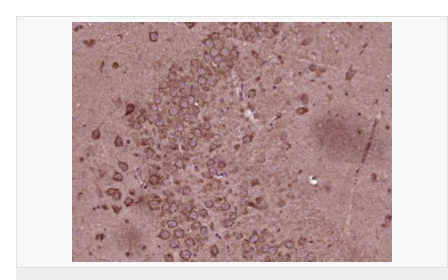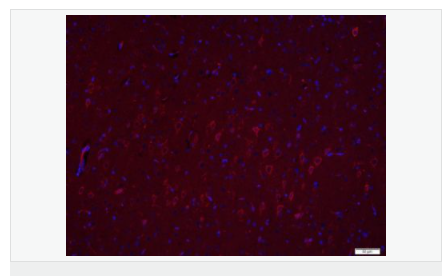

貨號(hào)
產(chǎn)品規(guī)格
售價(jià)
備注
BN40334R-100ul
100ul
¥2360.00
交叉反應(yīng):Human,Mouse,Rat(predicted:Dog,Pig,Horse,Rabbit,Sheep) 推薦應(yīng)用:WB,IHC-P,IHC-F,ICC,IF,ELISA
BN40334R-200ul
200ul
¥3490.00
交叉反應(yīng):Human,Mouse,Rat(predicted:Dog,Pig,Horse,Rabbit,Sheep) 推薦應(yīng)用:WB,IHC-P,IHC-F,ICC,IF,ELISA
產(chǎn)品描述
| 英文名稱(chēng) | LIM kinase 1 + 2 |
| 中文名稱(chēng) | 單絲氨酸蛋白激酶1+2抗體 |
| 別 名 | LIM kinase 1+2; LIMK1+LIMK2; LIM domain kinase 1; LIM domain kinase 2; LIMK1; LIMK2;LIMK1_HUMAN; LIMK2_HUMAN. |
| 研究領(lǐng)域 | 細(xì)胞生物 神經(jīng)生物學(xué) 信號(hào)轉(zhuǎn)導(dǎo) 細(xì)胞骨架 表觀(guān)遺傳學(xué) |
| 抗體來(lái)源 | Rabbit |
| 克隆類(lèi)型 | Polyclonal |
| 交叉反應(yīng) | Mouse, Rat, (predicted: Human, Dog, Pig, Horse, Rabbit, Sheep, ) |
| 產(chǎn)品應(yīng)用 | WB=1:500-2000 ELISA=1:5000-10000 IHC-P=1:100-500 IHC-F=1:100-500 ICC=1:100-500 IF=1:200-800 (石蠟切片需做抗原修復(fù)) not yet tested in other applications. optimal dilutions/concentrations should be determined by the end user. |
| 分 子 量 | 72, 73kDa |
| 細(xì)胞定位 | 細(xì)胞核 細(xì)胞漿 |
| 性 狀 | Liquid |
| 濃 度 | 1mg/ml |
| 免 疫 原 | KLH conjugated synthetic peptide derived from human LIM kinase 1 + 2:365-470/647 |
| 亞 型 | IgG |
| 純化方法 | affinity purified by Protein A |
| 儲(chǔ) 存 液 | 0.01M TBS(pH7.4) with 1% BSA, 0.03% Proclin300 and 50% Glycerol. |
| 保存條件 | Shipped at 4℃. Store at -20 °C for one year. Avoid repeated freeze/thaw cycles. |
| PubMed | PubMed |
| 產(chǎn)品介紹 | LIMK 1 and 2 likely regulate aspects of the cytoskeleton, through control of the organization of actin filaments. They can phosphorylate an actin-binding protein, cofilin which binds to actin monomers and polymers and promotes the disassembly of actin filament.The phosphorylation of cofilin via LIMK inactivates this potential. LIMK1 is highly active in the brain and spinal chord, where it is believed to be involved in the development of nerve cells whilst LIMK2 is ubiquitously expressed in many adult tissues. LIMK1 may play an important role in areas of the brain that are responsible for processing visual-spatial information (visuospatial constructive cognition). These parts of the brain are important for visualizing an object as a set of parts and performing tasks such as writing, drawing, constructing models, and assembling puzzles. LIMK1 is specifically stimulated by Rac, one of the Rho family proteins, while LIMK2 activity is activated under the control of other Rho family members, Rho and Cdc42, suggesting that two distinct pathways exist in the Rho family driven actin cytoskeleton dynamics. Function: Protein kinase which regulates actin filament dynamics. Phosphorylates and inactivates the actin binding/depolymerizing factor cofilin, thereby stabilizing the actin cytoskeleton. Stimulates axonal outgrowth and may be involved in brain development. Isoform 3 has a dominant negative effect on actin cytoskeletal changes. Subunit: Interacts (via LIM domain) with the cytoplasmic domain of NRG1 (By similarity). Interacts with NISCH (By similarity). Interacts with RLIM and RNF6 (By similarity). Self-associates to form homodimers. Interacts with HSP90AA1; this interaction promotes LIMK1 dimerization and subsequent transphosphorylation. Interacts with CDN1C. Interacts with SSH1. Interacts with ROCK1. Subcellular Location: LIMK1 Cytoplasmic LIMK2 Cytoplasmic and Nuclear. Isoform LIMK2a is distributed in the cytoplasm and the nucleus, and isoform LIMK2b occurs mainly in the cytoplasm and is scarcely translocated to the nucleus. Tissue Specificity: Highest expression in both adult and fetal nervous system. Detected ubiquitously throughout the different regions of adult brain, with highest levels in the cerebral cortex. Expressed to a lesser extent in heart and skeletal muscle. Post-translational modifications: Autophosphorylated (By similarity). Phosphorylated on Thr-508 by ROCK1 and PAK1, resulting in activation. Phosphorylated by PAK4 which increases the ability of LIMK1 to phosphorylate cofilin. Phosphorylated at Ser-323 by MAPKAPK2 during activation of VEGFA-induced signaling, which results in activation of LIMK1 and promotion of actin reorganization, cell migration, and tubule formation of endothelial cells. Dephosphorylated and inactivated by SSH1. Phosphorylated by CDC42BP. Ubiquitinated. 'Lys-48'-linked polyubiquitination by RNF6 leads to proteasomal degradation through the 26S proteasome, modulating LIMK1 levels in the growth cone and its effect on axonal outgrowth. Also polyubiquitinated by RLIM DISEASE: Note=LIMK1 is located in the Williams-Beuren syndrome (WBS) critical region. WBS results from a hemizygous deletion of several genes on chromosome 7q11.23, thought to arise as a consequence of unequal crossing over between highly homologous low-copy repeat sequences flanking the deleted region. Similarity: Belongs to the protein kinase superfamily. TKL Ser/Thr protein kinase family. Contains 2 LIM zinc-binding domains. Contains 1 PDZ (DHR) domain. Contains 1 protein kinase domain. SWISS: P53667 Gene ID: 3984 Database links: Entrez Gene: 3984 Human Entrez Gene: 16885 Mouse Omim: 601329 Human SwissProt: P53667 Human SwissProt: P53668 Mouse Unigene: 647035 Human Unigene: 15409 Mouse Unigene: 11250 Rat Important Note: This product as supplied is intended for research use only, not for use in human, therapeutic or diagnostic applications. |




